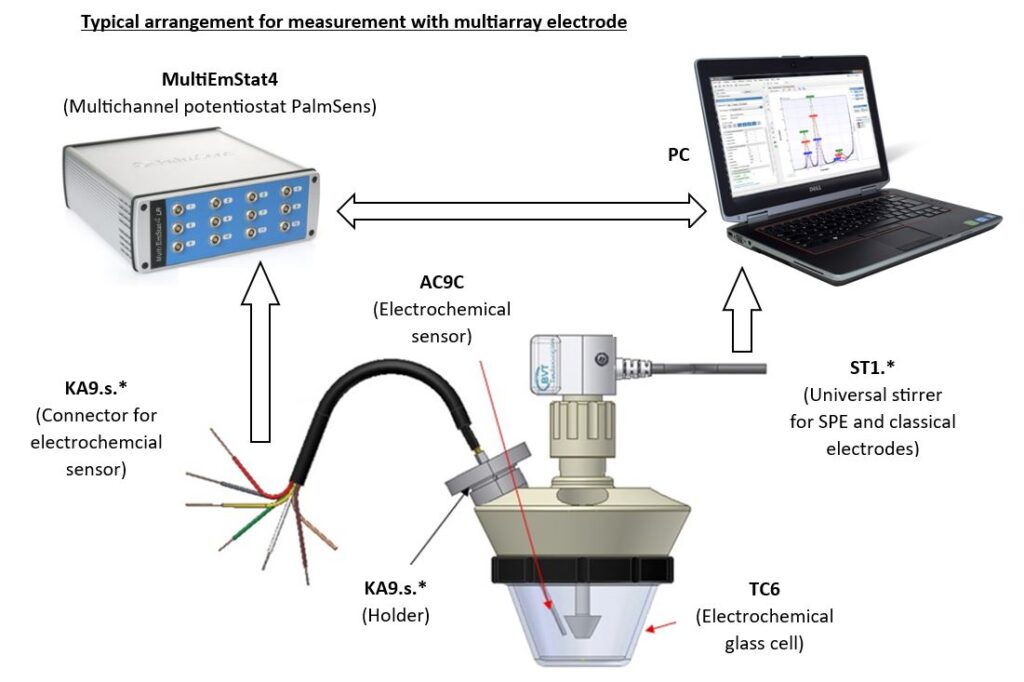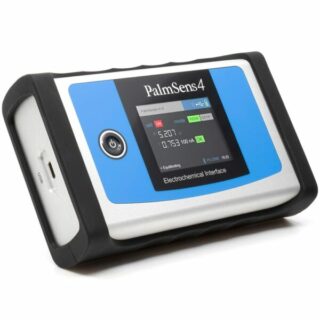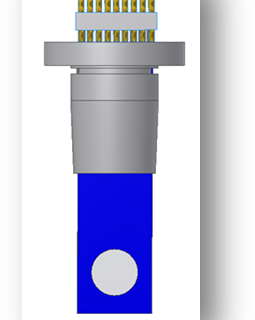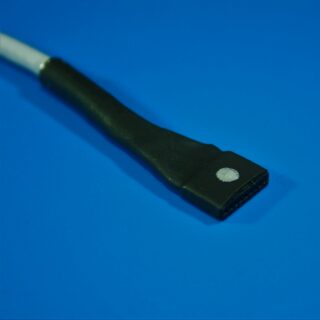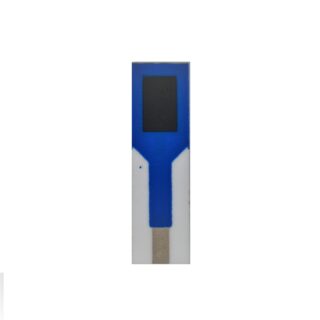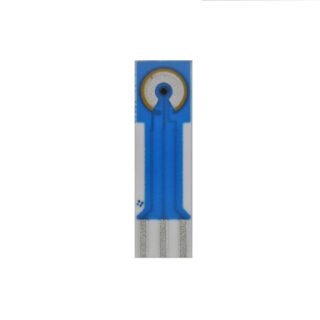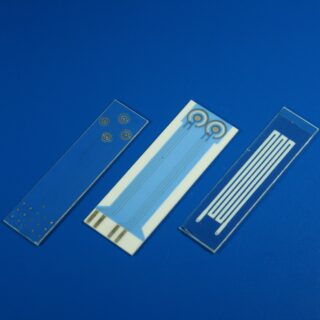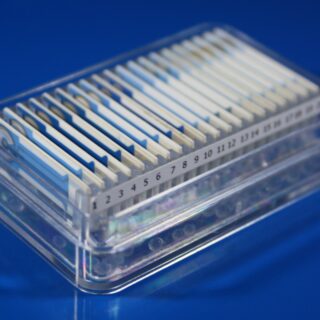Category
- CUSTOMER SERVICES
- NEW PRODUCTS
- Sensors and electrodes
- Custom made and Modified Screen Printed Electrodes
- Stirrers
- Cables and connectors
- Cell
- Potentiostats
- Manual Screen Printer
- Minithermostat
- Pumps
- Accessories
- Kits & Sets
- Discounted SPEs (at a reduced price with visual defects/inconsistancies, but fully functional)
AC9C Electrochemical sensor
Amperometric sensor with an array of 8 working electrodes and 1 common reference electrode made by thick film technology with integrated connector
Dimensions: 59.0 x 12.7 x 0.63 mm
WE material: Au/Pt, Au, Pt, Ag, C
The sensor is formed on a corundum ceramic base. On to this surface eight working electrodes, and the reference electrode are applied. The electrodes can be made of variety of materials (see below). At the end of the sensor there is an integrated connector. It is connected with the active part by the silver conducting paths which are covered by a dielectric protection layer. Different bio-chemically active substances can be immobilised on the working electrodes of the sensor.
You may also like…
-
PalmSens4
Read moreThe PalmSens4, is a USB and battery powered Potentiostat, Galvanostat, and optional a Frequency Response Analyser (FRA) for Electrochemical Impedance Spectroscopy (EIS).
Compact, versatile and powerful
- (Bi)Potentiostat / Galvanostat / Impedance Analyzer
- FRA / EIS: 10 μHz up to 1 MHz
- 9 current ranges: 100 pA to 10 mA
- 18-bit resolution
- Bluetooth or USB connection
The PalmSens4 has a large potential range (-5V to 5V or -10V to 10V) and current range (100 pA to 10 mA) with a high resolution and low noise. The economical PalmSens4 is a complete laboratory instrument but its compact and rugged design makes it also ideal for field work.
Connecting via Bluetooth guarantees a perfectly floating measurement.
More information can be found through the link: https://www.palmsens.com/product/palmsens4/
Configurable
PalmSens4 comes in different configurations:
- ±5 V or ±10 V potential range
- EIS/FRA with maximum frequency of 100 kHz or 1 MHz
- optional BiPotentiostat module for second WE
- optional iR-Compensation
Standard included
- Rugged carrying case
- High quality, double shielded cell cable with
2 mm banana connectors for Working, Counter, Reference electrode and Ground - Crocodile clips
- Dummy cell
- USB cable
- Manual and Quick Start document
- PSTrace software for Windows
-
TC9 Electrochemical Glass Cell
Read moreBorosilicate glass cell serves for electrochemical measurements.
The analyzed solution can be thermostated by external thermostat MT1-1.
Cell openings are designed for stirrer ST9 or mini RDE and connector KA9.s with folder for electrochemical sensor AC9C, classical electrodes WCEc, ACEc and RCEc. The device enables the measurement with inserted samples.
Related products
-
AC4 Electrochemical sensor
Read moreAmperometric single working electrode sensor with a extremely big working electrode made by thick film technology
Dimensions: 25.4 x 7.26 x 0.63 mm
WE material: Au/Pt, Au, Pt, Ag, C
The sensor is formed on a corundum ceramic base. On to this surface working electrode is applied. The working electrode is made of variety of materials. At the end of the sensor there is a contact which is connected with the active part by the silver conducting path which is covered by a dielectric protection layer.
-
AC1P Electrochemical sensor
Read moreAmperometric three-electrode sensor with patented structure type AC1 with polished working electrode made by thick film technology.
Dimensions: 25.4 x 7.26 x 0.63 mm
WE material: Au
The sensor is formed on a corundum ceramic base. On to this surface the working, the reference and the auxiliary electrodes are applied. Working electrode has homogenous surface with roughness less than 1 µm. The working and the auxiliary electrodes are made of variety of materials. At the end of the sensor there is a contacting field which is connected with the active part by the silver conducting paths which are covered by a dielectric protection layer. A bio-chemically active substance can be immobilised on the working electrode of the sensor to create a biosensor.
-
Custom and Modified Screen Printed Electrodes (SPE)
Read moreWe offer our customers Modified and Custom Screen Printed Sensors based on their demands and needs, we will also recommend to the customer if there is a better option for their intended purposes.
Examples of possible Modified SPE Surfaces
Graphine, Streptavidin, Polyaniline and High-purity Materials.
High-purity material on WE
We can provide polished working electrode or insert a high-purity material on WE (99.9% or better).
The WE can be applied also by sputtering.
Materials of WE
We can offer you not only standard materials as Au/Pt, Au, Pt, Ag, C (carbon) but also glassy carbon, Ni, Cu, and other materials.
Special Active Surfaces
We can provide SPEs with Special Active Surfaces using Copper (Cu), Nickle (Ni), Magnesium (Mg), Bismuth (Bi) and Zirconium (Zr).
Sensor/device size
The Technological capabilities and our experience and knowledge enable us to produce devices from as small as 3 x 6 mm, up to as large as 150 x 1200 mm.
-
STK-C Customer Starting kit
Read moreStarting Kit STK.S-C
The customer starter kit is a set of twenty different electrochemical sensors to find the best one that suits your application.
The starter set contains at least 5 pcs of sensors type AC1.W*.R* from the given type of sensors with a working electrode diameter (Dw) 1 or 2 mm stored in a box with numbered positions and silica gel.
The exact choice of the given types of sensors in the kit is at the request of the customer.


